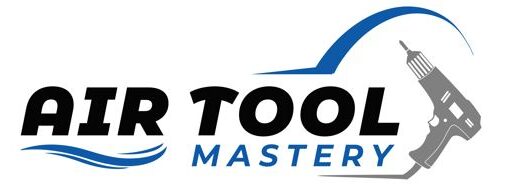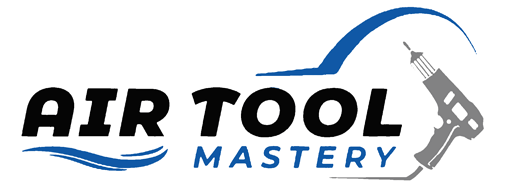Air compressors are versatile tools with a myriad of uses in various industries, from powering pneumatic tools to inflating tires. Air compressor parts work together as a complex assembly, each of which plays a vital role in its operation.
The biggest supplier names in the industry when it comes to parts for air compressors are:
- Campbell Hausfeld air compressor parts
- Campbell Hausfeld air compressor parts
- Husky air compressor parts
- Central pneumatic air compressor parts
- Ingersoll rand air compressor parts
- Kobalt air compressor parts
Understanding the different parts of an air compressor can enhance your ability to maintain and troubleshoot these invaluable machines, aiding in prolonging their lifespan and optimizing performance.
Detailed Breakdown of Air Compressor Parts
Compressor Pump
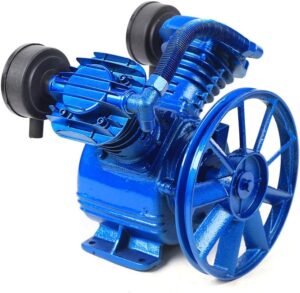
The compressor is the heart of an air compressor and is responsible for pressurizing the air. There are two types of compressors: reciprocating and rotary screw. Each has its own unique set of parts, but their overall function remains the same. Think of a compressor pump as the engine of a car. It generates power to drive other parts and functions using different mechanisms, depending on the type.
Motor

The motor is a crucial component of an air compressor, supplying the power needed for the machine to operate. It’s essentially the driving force behind the compressor pump, pressurizing the air. Motors vary in size, power, and type, depending largely on the intended application of the air compressor. Electric motors are the most commonly used types of air compressors due to their efficiency and relative ease of maintenance. They come in various sizes, specified by horsepower, and can range from a fraction of a horsepower for small, portable units to thousands of horsepower for large industrial compressors.
The motor spins the compressor pump’s crankshaft, initiating a cycle of compression and displacement of air within the tank. It’s crucial to regularly check and maintain the motor, as its performance directly impacts the overall functioning of the air compressor. Regular maintenance includes ensuring the motor is clean, properly lubricated, and cooled, and inspecting for any wear or damage. By understanding and maintaining the motor, you can ensure the longevity and efficient operation of your air compressor.
Tank

The tank, also commonly known as the air receiver, is an integral part of the air compressor system, which serves the purpose of storing compressed air. Acting like a reservoir, it holds a certain volume of compressed air that can be utilized as and when required. This reservoir plays a crucial role in maintaining uniform pressure by balancing the supply and demand of compressed air.
The tank also acts as a heat dissipator. As the air is compressed, it generates heat, which is then absorbed by the tank, reducing the temperature of the air and decreasing its moisture content. This prevents damage caused by moisture to the downstream air tools and machinery.
Pressure Switch
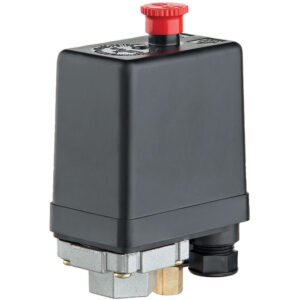
The pressure switch is another critical component of an air compressor that ensures safe and efficient operation. It monitors the pressure inside the tank and automatically shuts off the motor when it reaches the preset limit.
This prevents overpressurization, which can lead to tank ruptures or other safety hazards. The pressure switch also turns on the motor when the pressure drops below a certain level, allowing the compressor to maintain a consistent level of pressure in the tank. With advances in technology, some pressure switches now have digital readouts and can be programmed for specific pressure settings.
Regulator
The regulator is responsible for controlling the amount of air flowing out of the compressor. It’s typically connected to an outlet valve or hose and allows the user to adjust the pressure according to their needs. This is especially useful for tools and equipment that require different levels of air pressure.
Regulators can also have a gauge that displays the current pressure, allowing for precise adjustments. It’s essential to regularly check and replace regulators if they become damaged or worn out, as they can affect the performance and longevity of your air compressor.
Air Filters
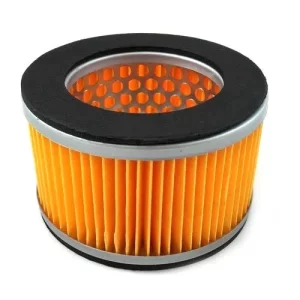
Air compressors draw in air from the surrounding environment, which can contain dust, debris, and other contaminants. To prevent these particles from damaging internal components or being released into the compressed air supply, air filters are used to clean the incoming air.
There are various types of air filters, including paper element filters, coalescing filters that remove oil and moisture, and high-efficiency filters that can remove even the smallest particles. It’s crucial to clean or replace air filters regularly to maintain peak performance and prevent potential damage.
Belts, Pulleys, and Couplings
Many larger air compressors are powered by an electric motor, which drives a series of belts, pulleys, and couplings to turn the compressor pump. These components are responsible for transferring power from the motor to the compressor and can experience wear and tear over time.
It’s important to inspect and replace these parts if they become damaged or worn, as they directly impact the efficiency and operation of your air compressor. Regular maintenance, such as lubrication and tension adjustments, can also help prolong the lifespan of these parts.
Hoses and Fittings
Air compressors use hoses and fittings to transport the compressed air from the pump to various tools and equipment. These parts are crucial for maintaining a steady flow of air and ensuring that it reaches its intended destination without any leaks.
It’s essential to regularly check hoses and fittings for any signs of damage or wear, such as cracks, leaks, or loose connections. Replacing worn or damaged hoses and fittings can help prevent air leaks, which can affect the overall performance of your air compressor.
Pressure Relief Valve
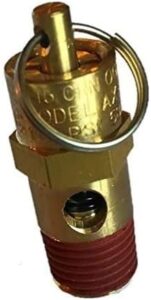
The pressure relief valve is a critical safety feature of an air compressor. It’s designed to release excess pressure in the system to prevent overloading and potential accidents. Regularly inspecting and testing this valve is vital to ensure that it’s functioning correctly.
If you notice any issues with the pressure relief valve, such as not releasing enough pressure or not closing properly, it’s important to replace it immediately to avoid potential safety hazards.
Air Filters
Air filters play a crucial role in ensuring the quality of the air produced by your compressor. They prevent dust, debris, and other contaminants from entering the system and affecting its performance. It’s important to regularly clean or replace air filters according to manufacturer recommendations to maintain optimal air quality.
Lubrication System and Compressor Oil
Most air compressors require some form of lubrication to function properly. This is usually achieved through a lubrication system that distributes oil to various components of the compressor, including the pump and motor. It’s crucial to regularly check and change the compressor oil as recommended by the manufacturer to prevent damage and ensure smooth operation.
Other Components and Accessories
In addition to the major parts mentioned above, there are several other components that are essential for an air compressor to function properly. These include pressure gauges, safety valves, relief valves, drain valves, and more. Each of these parts plays a crucial role in maintaining the proper pressure, temperature, and safety of your air compressor.
Regular inspection and maintenance of these parts can help ensure that your air compressor is operating at its best. It’s important to follow manufacturer recommendations for replacement intervals or replace any damaged or malfunctioning components as soon as possible.
Common Issues with Air Compressor Parts
While compressor parts are generally built for durability, they can encounter issues over time due to frequent use or a lack of maintenance. Below are some common issues associated with each part, along with possible symptoms and troubleshooting tips:
Compressor Pump
Potential problems with the compressor pump might include wear and tear on its moving parts or a failure to compress the air properly. You might notice your compressor pump is taking longer to fill the tank or is overheating. Regular inspection and replacement of worn parts, along with proper lubrication, can keep the compressor pump functioning effectively.
Motor
The compressor motor could become problematic if it’s overheating or not starting properly. If your motor is excessively hot, it may be due to overuse or insufficient cooling. In cases where the motor doesn’t start, electrical issues can be the culprit. Always ensure the motor is properly cooled and check your electrical connections for any issues.
Pressure Switch
If your pressure switch isn’t effectively controlling the motor, it can lead to either too much or too little pressure in your compressor. You may notice that the motor doesn’t stop when it should or doesn’t start at all. Regular inspection of the pressure switch and adjusting it according to the manufacturer’s specifications can help prevent these issues.
Pressure Gauges
Pressure gauges can give inaccurate readings if they become damaged or worn out. This can lead to safety risks due to incorrect pressure in the tank. Always check your gauges regularly and replace them if you notice any inconsistencies with their readings.
Safety and Relief Valves
Both safety and relief valves play crucial roles in preventing over-pressurization of the compressor tank. If they fail to open when the pressure reaches a certain limit, it can lead to dangerous situations. Regular check-ups and replacement of these valves when needed can ensure the safety of your compressor operation.
Conclusion
As you can see, there are many different parts that make up an air compressor, all working together to produce compressed air for various applications. It’s important to have a good understanding of these parts and their functions so that you can properly maintain your air compressor and ensure its longevity.
Regular maintenance, including routine checks, lubrication, and part replacements when necessary, is crucial for keeping your air compressor in top condition. By taking good care of your air compressor and its parts, you can ensure that it continues to provide you with reliable compressed air for years to come. So next time you use your air compressor, remember to thank all the hard-working parts that make it possible.
